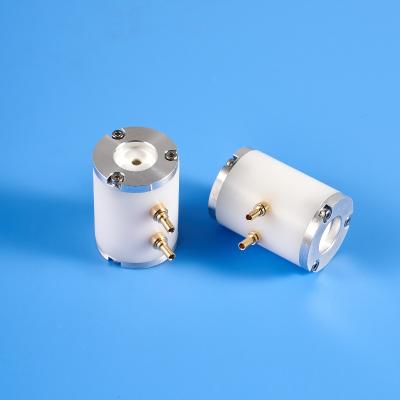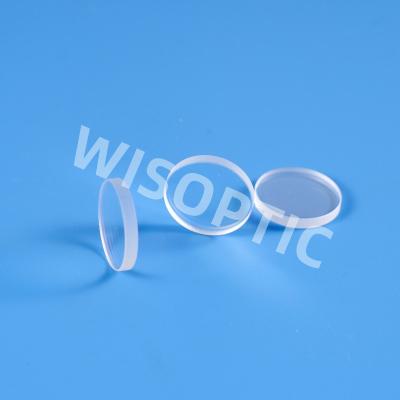Tracking and understanding laser damage events in optics - Part 07
2.1 Manipulating and understanding laser damage precursors through material growth processes
Combined with the statistical model, information such as precursor density and threshold distribution can be extracted from the damage probability curve, which indirectly reflects the information of the precursor. The analysis shows that the KDP crystal (www.wisoptic.com) mainly contains a precursor with a threshold distribution. After continuous filtration, the fundamental frequency damage threshold of the precursor is significantly increased, and the total density is significantly reduced, as shown in the table below, where the parameter ρ0 represents the density of the precursor, and T0 indicates the mean value of the precursor threshold, and ΔT indicates the standard deviation of the threshold.
It is considered in the literature that these nanoscopic defects in KDP crystals are most likely stoichiometric electron defect clusters, so it can be considered that the real part of the refractive index of the nanoscopic defects is equal to the matrix material, and the characteristic quantity of the nanoscopic defects can be determined by its size and refractive index. The initial damage occurs because the nanoscopic defects cause the temperature rise to exceed the critical temperature of KDP crystal damage by absorbing laser energy. Once the critical temperature is exceeded, the material will melt and cause uncontrolled absorption and damage. This critical temperature is usually assumed to be ~550 K. Based on the thermal diffusion model, combined with the damage critical temperature and threshold measurement results, the relationship between the characteristic quantity information of nanoscopic defects in KDP crystals and the damage can be inversely deduced. Simulation analysis shows that the maximum extinction coefficient of nanoscopic defects in NCF samples is about 4×10−4, and the relationship T(a) between the threshold of energy density and the scale of nanoscopic defects is obtained, as shown in Figure (a). The smaller the scale of defects, the higher the threshold. The threshold of larger nanoscopic defects has no much difference. The scale distribution ρ(a) of nanoscopic defects can be obtained by substituting the relationship T(a) of the energy density threshold into the distribution function of the defect threshold, as shown in Figure (b). The density and size-scale of the nanoscopic defects obviously decrease with the decrease of filter pore size.
Although the size of the precursors cannot be actually measured, the trend of the influence of the filter pore size on the size of the precursors in the KDP crystal is confirmed, which is consistent with the simulation results of the defects' heat absorption model. On the one hand, it shows that the damage of KDP crystals under fundamental frequency laser irradiation mainly comes from the heat absorption of the precursors with size of tens of nanometer. On the other hand, it also gives the absorption characteristics of the precursors and the quantitative requirements of their size scale under different conditions of the laser flux. This research result plays a key guiding role in the development of high-performance KDP crystals.



